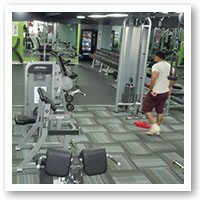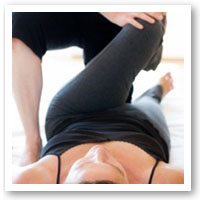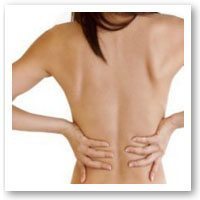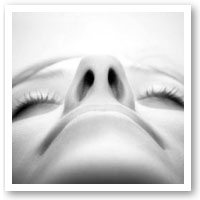Naturopath’s Top 7 Tips to Increase Energy and Fatigue.
 When was the last time you felt really good? And I mean REALLY good!
When was the last time you felt really good? And I mean REALLY good!
Remember when as a kid you would have days where you bounced out of bed in the mornings, excited and energised? Do you now struggle to get out of bed, with energy slumps during the day, propping yourself up with caffeine and sugar, and when you get home you only have the energy to watch a little TV and fall into bed?
Can you pinpoint the day that you lost your energy? For many, loss of energy is something that sneaks up on us. The reduction in our energy most often happens so gradually that we don’t notice the change from one day to the next. The sad thing is that we actually get used to feeling low in energy and this becomes our new “normal”.
There is often a biological reason for why we feel so tired. In our cells are very small things called mitochondria. Mitochondria are a little like batteries that produce energy for the whole body. These mitochondria require several specific nutrients in order to produce energy at an efficient rate. If any of these nutrients are not available, or if the mitochondria are damaged, the energy we have available goes down.
So how can you increase your energy?
Ultimately, there is no quick fix that will work in the long term. The solution is to get back to basic good living to take the load off your mitochondria and really improve your energy. When I feel that my energy is low, these are the seven things that I do:
- Get adequate, regular and consistent amounts of sleep each night – if you are having trouble sleeping, my best tip is to switch of all technological devices about 90 minutes before bedtime. This includes the tv, computers, smart phones, tablets etc as the blue light emitting from these devices can disrupt the production of your sleep hormone – melatonin.
- Eat a healthy, well-balanced diet and drink plenty of water throughout the day. Some people find that reducing the consumption of wheat, dairy and red meat improves overall energy.
- Exercise regularly – a gentle walk in the morning sunshine can be helpful for those suffering fatigue and insomnia.
- Avoid too many stimulants such as caffeine, foods high in sugar and alcohol.
- For some people, just making the above 4 changes is enough to put the bounce back into their step. Many people, however, need more intensive support than this. Certain nutrients can really assist here.
- CoQ10 – is vital for healthy energy production in our cells and protects our mitochondria from day to day damage. Many of my clients notice a real difference when they take this nutrient regularly.
- Omega 3, found in fish oils – also protects our mitochondria from damage.
- N-acetyl carnitine and lipoic acid – shovels nutrients into the mitochondria and stabilises blood sugar levels.
- B Vitamins – essential for energy production for the mitochondria.
- Herbal medicines can also noticeably improve energy levels. These include ginseng – there are a few different types of ginseng available, with slightly different effects. I like Korean ginseng (Panax ginseng) for men and Siberian ginseng (Eleutherococcus senticosis) for women. Rhodiola is also a good herb to try as it supports the adrenals and balances blood sugar.
- Taking care of your emotional and mental health can also enormously improve overall energy levels. This can include:
- Surrounding yourself with positive and uplifting people, and avoid people who you find draining and toxic.
- Listen to beautiful music – whatever you find that to be.
- Search for health, fitness and motivational podcasts.
- Watching positive television shows and movies – avoid violence, gossip and dark dramas.
- Reading literature with a positive message and avoiding content that overstimulates or depresses.

 When was the last time you felt really good? And I mean REALLY good!
When was the last time you felt really good? And I mean REALLY good! Health Benefits of Exercise.
Health Benefits of Exercise. Types of exercise.
Types of exercise. Before you get started
Before you get started Shopping List
Shopping List The Three Day Routine
The Three Day Routine Delivery assistance, natural birthing, drug-free birthing, low back pain, sciatic pain or pain down the leg, baby in breach position, balance and coordination, hormonal balance.
Delivery assistance, natural birthing, drug-free birthing, low back pain, sciatic pain or pain down the leg, baby in breach position, balance and coordination, hormonal balance. When you’re faced with pain, especially if it’s the first time, it’s hard to know who to turn to. Can your GP help, or do you need someone more specialised, someone who treats your specific issue? Both physiotherapy and chiropractic professions specialise in the musculoskeletal system, to help improve overall health and well-being.
When you’re faced with pain, especially if it’s the first time, it’s hard to know who to turn to. Can your GP help, or do you need someone more specialised, someone who treats your specific issue? Both physiotherapy and chiropractic professions specialise in the musculoskeletal system, to help improve overall health and well-being. Choosing a chiropractor is an important decision. A chiropractor helps to improve your health by looking at your spine and nervous system and their relationship to the rest of the body. Before putting yourself in the hands of a chiropractor there are some things you should consider:
Choosing a chiropractor is an important decision. A chiropractor helps to improve your health by looking at your spine and nervous system and their relationship to the rest of the body. Before putting yourself in the hands of a chiropractor there are some things you should consider: Firstly, what is Naturopathy?
Firstly, what is Naturopathy? What to Expect from a Chiropractic Consultation
What to Expect from a Chiropractic Consultation
 Healthy breathing is when the area between the lower ribs bulges out on the in-breath and deflates on the out-breath. This makes sure that air is drawn into the lower parrts of the lungs. The breathing pattern should be slower, even and gentle. Drawing attention to your breath for 20 minutes per day will improve the way you breathe and your general well being, strengthen your lungs, regulate metabolism and help regulate your emotions and response to stress.
Healthy breathing is when the area between the lower ribs bulges out on the in-breath and deflates on the out-breath. This makes sure that air is drawn into the lower parrts of the lungs. The breathing pattern should be slower, even and gentle. Drawing attention to your breath for 20 minutes per day will improve the way you breathe and your general well being, strengthen your lungs, regulate metabolism and help regulate your emotions and response to stress.